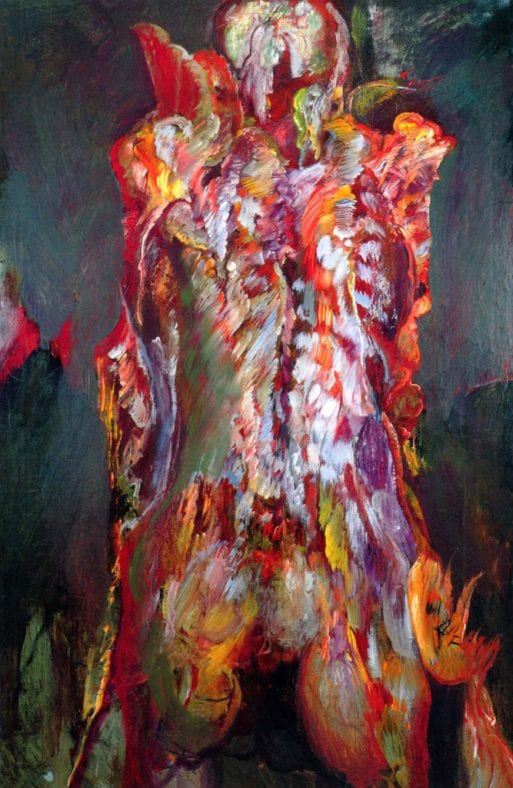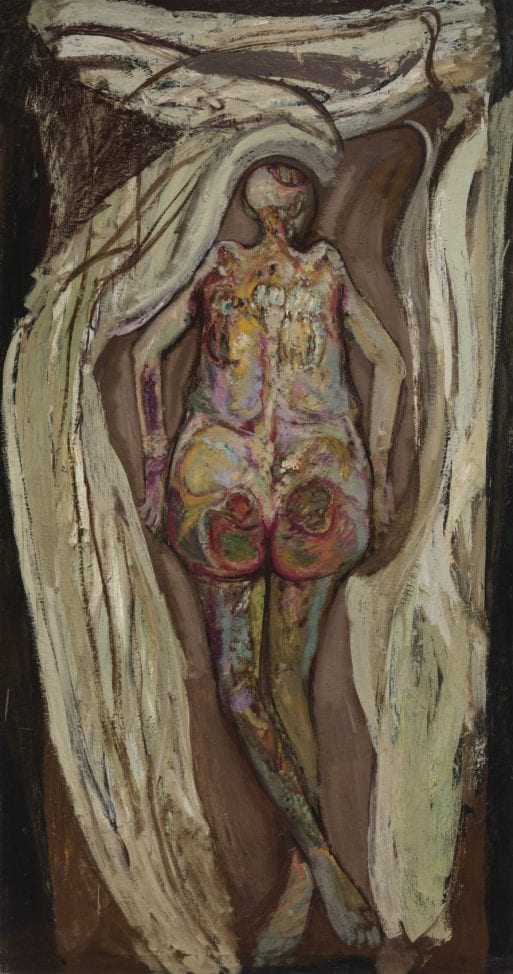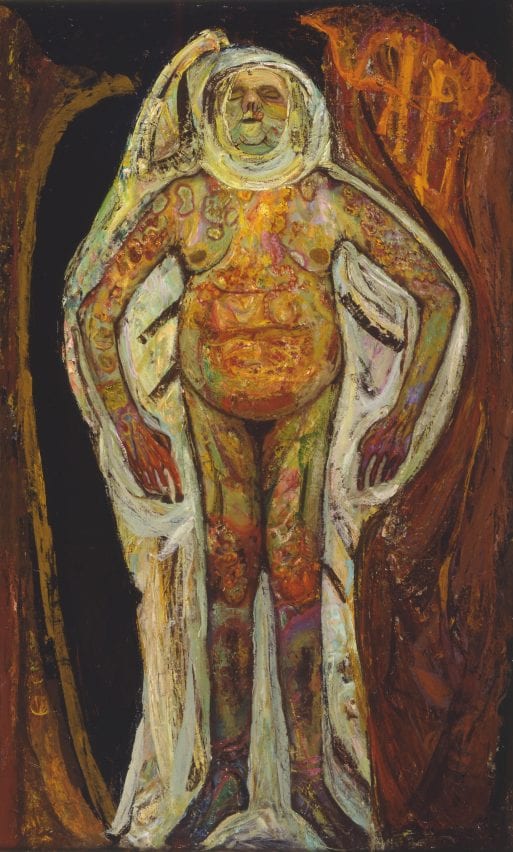
Hyman Bloom, Self-Portrait (1948)
Credit: Museum of Fine Arts Boston ©Stella Bloom Trust
The Museum of Fine Arts in Boston is currently featuring an exhibition of 70 works by noted Jewish-American artist Hyman Bloom. The exhibit, which runs through Feb. 23, 2020, features 70 of Bloom’s most critically acclaimed works, including his controversial paintings of dead humans and animals in various stages of decay. Created during the 1940s and early 1950s, these so-called “cadaver paintings” were considered by many in the art world to be far too gruesome for public display. (At the Durlacher Gallery in New York in 1945, they were relegated to a back room, where they could be viewed only on request.) Now, over seven decades later, they are finally receiving the attention and praise they deserve.

Female Corpse, Back View Hyman Bloom (1945)
Credit: Museum of Fine Arts Boston
Considered by many in the art world to be one of the most-overlooked artists of the 20th century, Hyman Bloom was born in Latvia in 2013. At the age of 7, he emigrated with his family to Boston’s West End, where he grew up in the shadow of the genteel, decidedly WASPY neighborhood of Beacon Hill. As a teenager, the young artist captured the attention of a number of influential sponsors, including Harvard art professor Denman Ross, who helped him financially so he could continue pursuing his art. Eventually, Bloom’s unflinching eye and vibrant use of color earned him a place alongside celebrated abstract expressionists such as Willem de Kooning, Jackson Pollock, and Arshile Gorky. In fact, de Kooning is said to have dubbed the young artist,”the first Abstract Expressionist artist in America,” a label which Bloom later shunned.
A Fascination with Death
Bloom’s fascination with death and decay reportedly began in 1943, when he accompanied artist David Aronson on a trip to the morgue. At first repulsed by the cadavers, Bloom soon became inspired by them, seeing them as a way to confront and overcome his fear of death. Calling on both his Jewish heritage and an interest in Eastern religions, Bloom approached the paintings in a completely unexpected way, seemingly celebrating the transition from life to death to “something-else.” The colors are vibrant, even joyous — carrying the viewer on an almost mystical journey from repugnance to acceptance of the fragility of the flesh. As Bloom reportedly explained, the paintings illuminate “the paradox that the harrowing and the beautiful could be brought into unity.”

Hyman Bloom, Female Corpse, Front View (1945). Credit: The Museum of Fine Arts, Boston, ©Stella Bloom Trust
Today, American society is beginning to open up to the idea that death and decay are a natural and normal part of the human journey. We are not, for the most part, at a point where we can celebrate the fact of our ultimate demise, but at least we are able to look at it — albeit occasionally — head on. But to do so we need people who are willing to pull back the curtain and show us the truth. Hyman Bloom was far ahead of his time in doing just that.

 Hyman Bloom’s “Matters of Life and Death:” An Unblinking Exploration of Death and Decay
Hyman Bloom’s “Matters of Life and Death:” An Unblinking Exploration of Death and Decay 


 First the Wealth Gap, Now the U.S. Has a Growing Health Gap
First the Wealth Gap, Now the U.S. Has a Growing Health Gap
 How to Comfort A Dying Loved One
How to Comfort A Dying Loved One
 Our Annual Seven Holiday Gifts for Someone Who Is Grieving, 2024 Edition
Our Annual Seven Holiday Gifts for Someone Who Is Grieving, 2024 Edition














